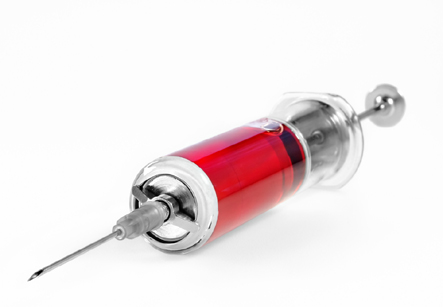Joint Injection
Introduction
Joint injection is a common treatment in orthopedic field. Injecting medicines in a painful joint can help in reducing pain and swelling, for instance from an injury or arthritis. Joint injection may decrease the accumulation of fluid and cells in the joint and may help temporarily in alleviating pain and stiffness. They may be given to treat inflammatory joint conditions, such as rheumatoid arthritis, psoriatic arthritis, gout, tendonitis, bursitis and, occasionally, osteoarthritis.
This is usually performed by doctors specialized in carrying out this injection procedure.
Corticosteroids such as methylprednisolone and triamcinolone formulated to stay primarily in the joint are frequently used for injection. These are long-acting anti-inflammatory agents that slow down the accumulation of cells responsible for producing inflammation within the joint space. Hyaluronic acid is a viscous lubricating substance which can relieve the symptoms of osteoarthritis of the knee for period of about 6–12 months. Mode of action is not clear.
Corticosteroids such as methylprednisolone and triamcinolone formulated to stay primarily in the joint are frequently used for injection.
Iran ranks among the top 10 countries in orthopedics and Iranian surgeons perform high quality orthopedic surgeries at highly affordable prices

Commonly injected joints:
Common joints subjected to this therapy include the knee, shoulder, ankle, elbow, wrist, base of the thumb and small joints of the hands and feet. Hip joint injection may require guidance of an ultrasound or X-ray called as fluoroscopy as it is deeply situated. Some small joints may be more easily injected with aid of ultrasound.
The pain relief can last from about one week to two months or longer, depending on the type of the medicine injected. The injections can be repeated every three to four months, but no more than three injections can be given in one year.
Preparation:
The injection may be performed in a hospital or on an out-patient basis. This depends on the joint to be injected.
The injection may also contain a local anesthetic, or a separate injection of local anesthetics given before the steroid injection. This helps to temporarily relieve the pain of the steroid injection.
The doctor will discuss the entire procedure, recovery after injection, benefits and risks as well as any alternatives to the procedure. After this, the patient is asked to sign a consent form for the procedure.
Procedure:
1. The doctor examines the area and cleans the skin with a sterile wipe.
2. He or she then injects the medicine. If local anaesthesia is required, it may either be given as a combined injection with the steroid using a single syringe or it is given by a separate injection.
3. For hip joint or some small joints, ultrasound or X-ray guidance is required during the procedure to help inject the medication into the right location
4. In case if the patient has arthritis, there is too much fluid in the joint making it feel tight and uncomfortable. In this case, the doctor may draw the fluid out with a syringe before injection. This is known as joint aspiration.
After the injection:
1. After a local anesthetic it may take several hours before the feeling comes back into the treated joint. Special care should be taken not to bump or knock the area till this time.
2. Pain relief may be needed to reduce any discomfort after the anaesthetic wears off.
3. The patient can go home after he or she feels alright. Before leaving, the doctor may access the joint movements and give some exercises to do at home.
4. The patient should arrange someone to drive till home and stay with him or her for at least first 24 hours after the joint injection.
Recovery:
1. For pain relief, the patient can take over-the-counter painkillers such as paracetamol or ibuprofen.
2. The patient is advised to keep movements to a minimum for a day or two.
3. The doctor should be informed quickly if you feel a high temperature or persistent swelling or pain in the joint that doesnot settle within 24 hours.
Side-effects
As with any procedure, the joint injection is not free from side effects. These include:
1. Increase in the pain and swelling in the injected area which usually settles within a day or two but can sometimes last up to two weeks.
2. Thinning or a change in the colour of the skin around the injection site. This can occur with stronger or repeated injections
3. Flushing or redness of face
Complications are when problems occur during or after the procedure. They can include:
1. Damage to nerves or tendons – this only occurs with repeated injections, but can cause numbness and weakness in the joint
2. Changes in mood
3. Changes in the menstrual cycle in women
4. Weakening of the bones, muscles and ligaments around the injected joint
5. Infection which may need antibiotic treatment
6. Allergic reaction to the medicines injected- this is very rare.
7. Local fat atrophy
Contraindications:
The injections are not given in case of infection in the joint or history of allergy to medications.